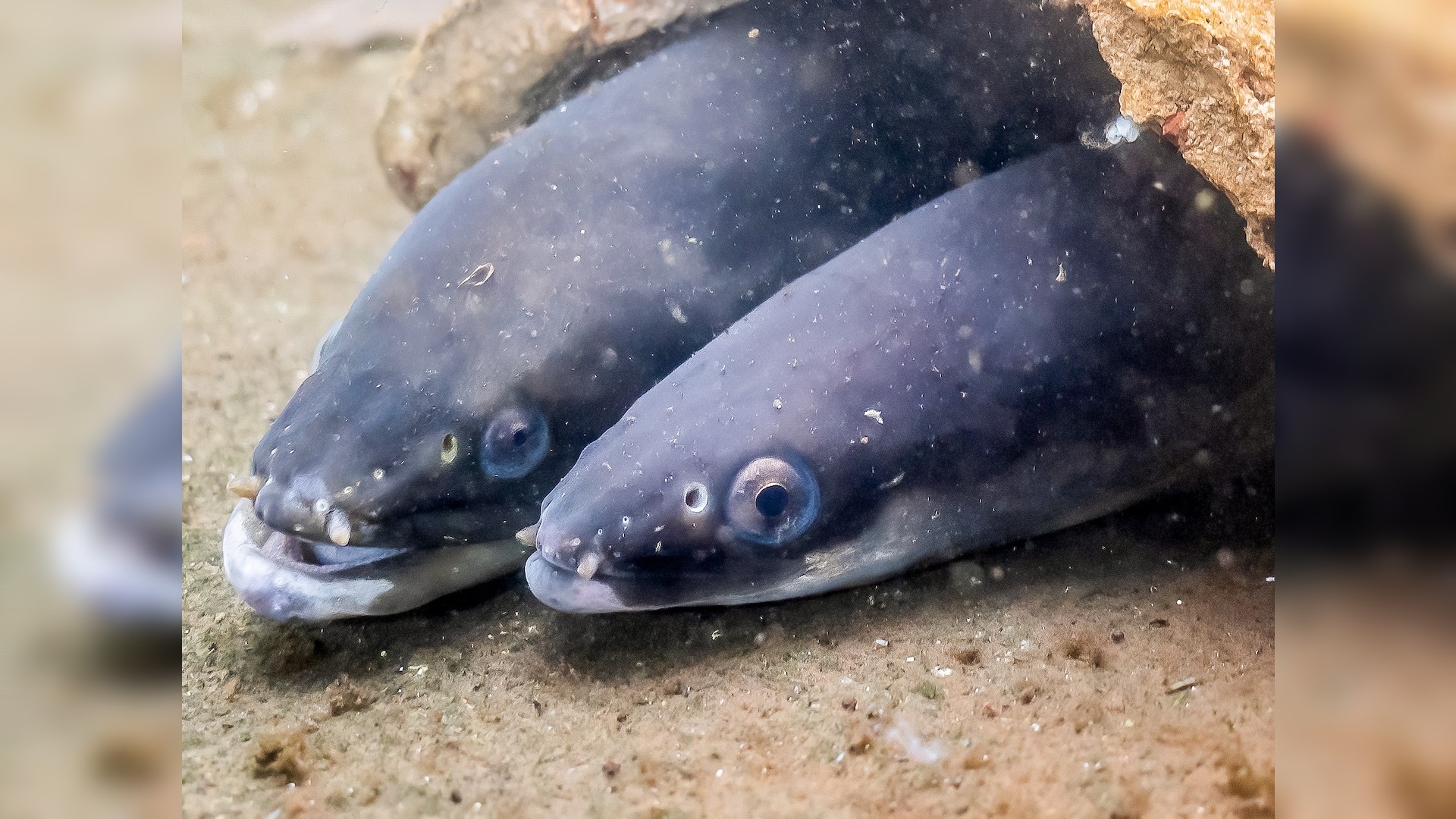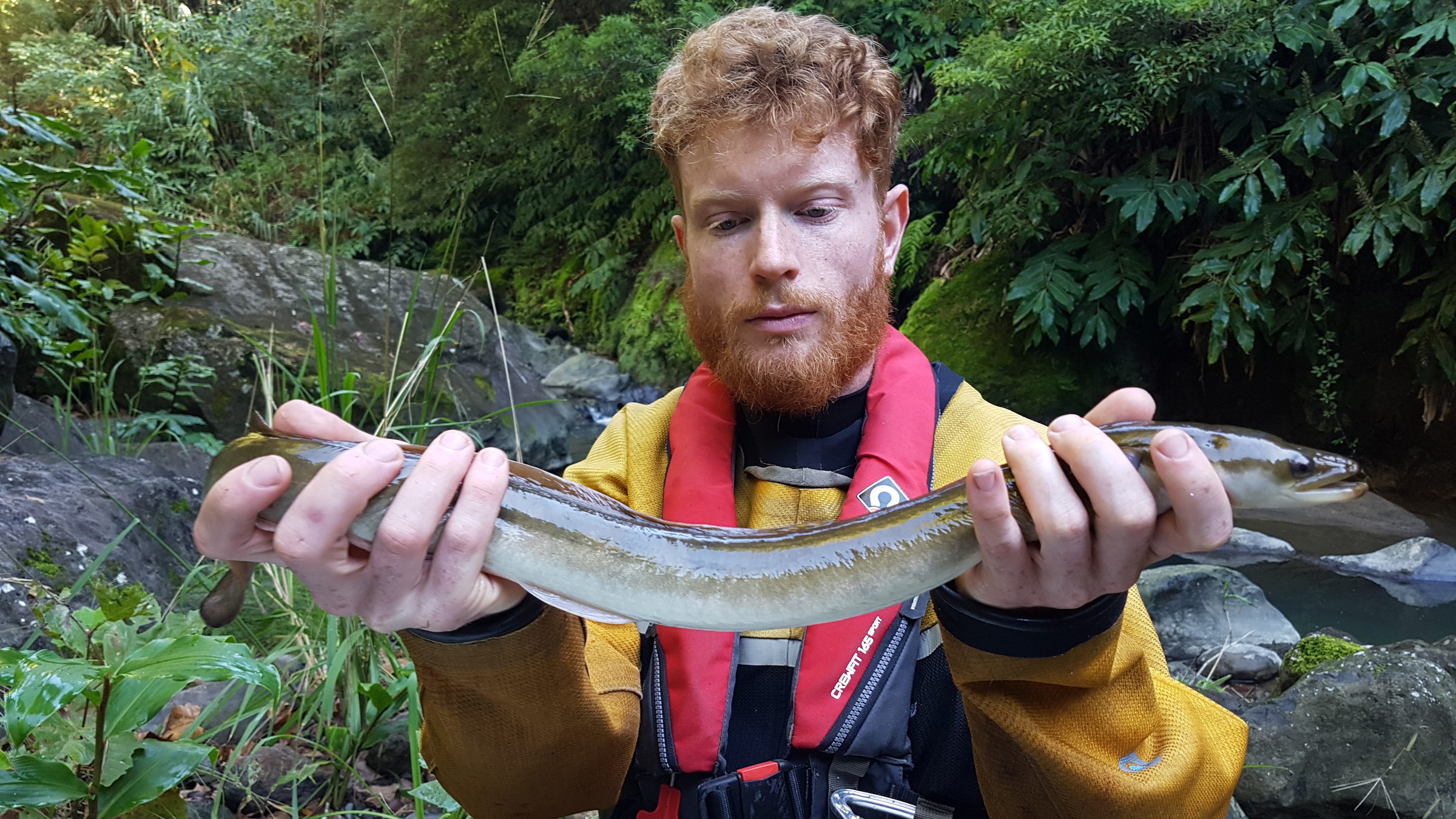
Where do eels come from?
European eels make an incredibly grueling, mysterious migration to spawn in the Sargasso Sea.

Critically endangered European eels (Anguilla anguilla) spend their adult lives in fresh water in Europe, ranging from Norway to the Mediterranean. But you won't find any baby eels in the mix. So where do all the mature eels come from?
Almost entirely across the Atlantic Ocean, as it turns out.
Adult European eels undertake a grueling 3,107 to 6,214 mile (5,000 to 10,000 kilometer) migration to the Sargasso Sea, not far from Bermuda, to spawn, lay eggs and die. Their young, transparent larvae float on the North Atlantic Drift, a current that takes them north and east across the Atlantic to Europe. The presence of small eel larvae in the Sargasso Sea — and nowhere else — revealed this far-flung spot to be their spawning ground a century ago. But only recently have researchers directly observed adult eels traveling to their final destination to lay their eggs. The findings were published October 2022 in the journal Scientific Reports.
"There [were] no records at all of any adult eels or eggs in the Sargasso Sea itself," said study co-author Ros Wright, a senior fisheries technical specialist at the United Kingdom's Environment Agency. But by tagging adult eels at the waypoint of their migration in the Azores, Wright and her team were able to trace a few to the Sargasso Sea.
Related: Can fish and other marine animals drown?
An incredible journey
European eels grow to about 2.6 feet (80 centimeters) long, but they complete one of the most dramatic migrations in the animal kingdom. The North Atlantic Drift lands them in European fresh water as "glass eels" — a transparent, wormlike stage. They gradually darken and grow larger, leaving the shelter of Europe again when they're less than 2.2 pounds (1 kilogram) in weight. Previous research had revealed that no matter where in Europe the eels hailed from, they gathered at the Azores during this migration. But no one knew how long the total migration took or what route the eels used to get from the Azores to the Sargasso Sea.

Part of the problem is that eels need to weigh at least 2.9 pounds (1.3 kg) to be fitted with a satellite tag. To find eels that were big enough, Wright and her team traveled to the Azores and set nets in rivers and pools. Some eels swim into these havens when they're small — they can climb up almost-vertical cascades, Wright told Live Science — and can't get out when they're larger. Wright and her team tagged these trapped eels and released them to continue their migration.
Sign up for the Live Science daily newsletter now
Get the world’s most fascinating discoveries delivered straight to your inbox.
In the October 2022 study, the researchers tracked 21 eels on a southwesterly trajectory toward the Sargasso Sea. Most of the tags popped off before the migration was done, but five of the eels made it into the Sargasso Sea while still being tracked.
The tags' data revealed why the eels are so elusive on this massive voyage. During daylight, they dive as deep as 4,921 feet (1,500 meters). At night, they swim closer to the surface, at 656 feet (200 m), still too deep to be spotted by anyone on the surface.
"That whole migration is actually quite deep and is in darkness most of the time," Wright said.
Taking it slow
The eels don't eat during this journey; their digestive systems dissolve and remake themselves as reproductive organs. But they're in no rush, Wright said. The tags showed that the eels traveled around 7.4 miles (11.9 kilometers) a day, at most. At that rate, it likely takes the eels about 18 months to make it from Europe to the Sargasso Sea, Wright said. In other words, the eels that left Europe this fall are not the same crowd that will spawn in the spring; it will be the spring of 2024 before they get their shot at reproduction.
The tracking data is "super exciting," said Caroline Durif, an ecologist at the Institute of Marine Research in Norway who was not involved in the new study but who has researched how eels navigate on this journey. The route matches what researchers suspected about the eels' journeys, she told Live Science. The animals likely navigate using Earth's magnetic fields, she said, but exactly how this works is still not fully known.
Once the eels spawn, they die. This is the natural rhythm of the life cycle for individuals, but European eels as a whole are in trouble. Their numbers have declined 95% since the early 1980s, Wright said. Some of the threats to the species may occur during the ocean-going phase of their lives, she said, which is why it's so important to understand and protect their migration routes.
"If we can establish the migratory routes, if it is really a critical area through the Azores and onwards, that has implications for things like deep sea mining," she said.
The researchers are still catching, tagging and releasing eels in the Azores, and they plan to continue reporting on the data. "We've got about another 10 to tag," Wright said.

Stephanie Pappas is a contributing writer for Live Science, covering topics ranging from geoscience to archaeology to the human brain and behavior. She was previously a senior writer for Live Science but is now a freelancer based in Denver, Colorado, and regularly contributes to Scientific American and The Monitor, the monthly magazine of the American Psychological Association. Stephanie received a bachelor's degree in psychology from the University of South Carolina and a graduate certificate in science communication from the University of California, Santa Cruz.









